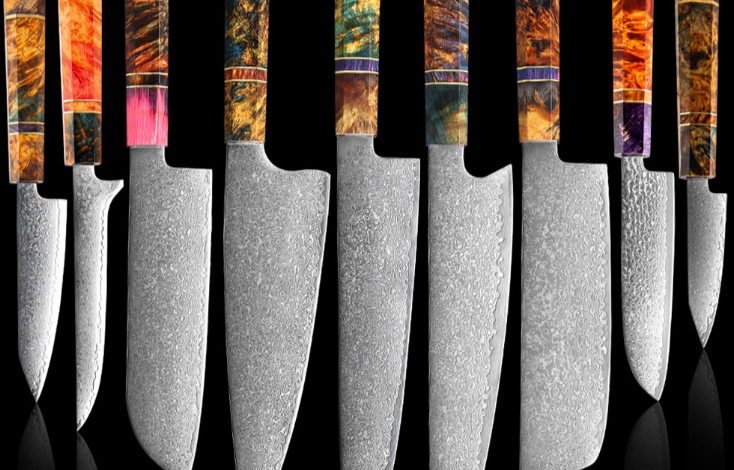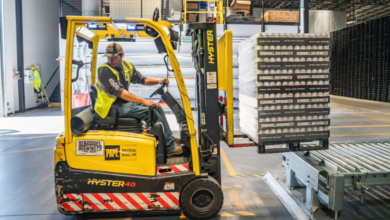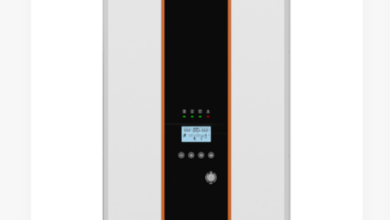Why Chefs Swear by Certain Kitchen Knives Over Others

Ask any professional chef about their knife collection, and you’ll likely witness their eyes light up as they describe their favorite blade. The kitchen knife isn’t just a tool—it’s an extension of their hand, their creativity, and their culinary expertise. But what makes one knife earn a permanent spot in a chef’s roll while another gets relegated to the back of the drawer?
Understanding knife preferences goes far beyond simple brand loyalty or aesthetic appeal. Professional chefs and serious home cooks develop strong preferences based on years of experience, countless hours of prep work, and the pursuit of culinary perfection. Their choices reflect a deep understanding of how subtle design differences can dramatically impact cooking performance.
The science behind knife preference combines ergonomics, metallurgy, and personal cooking style. Whether you’re building your first serious knife set or looking to upgrade your current collection, understanding these professional insights can transform your cooking experience and help you select blades that will serve you for decades.
The Ergonomics of Knife Handles
Handle design makes the difference between a knife that feels like a natural extension of your hand and one that causes fatigue after minutes of use. Professional chefs often prep for hours at a time, making handle comfort absolutely critical to their performance and long-term health.
The shape of a handle affects grip security and cutting control. Traditional Western handles feature a fuller, more rounded profile that fills the palm, while Japanese knife handles typically offer a more angular, octagonal shape that provides precise finger placement. Each design philosophy serves different cutting styles and hand sizes.
Material choice significantly impacts both comfort and durability. Wood handles, particularly those made from stabilized hardwoods, offer excellent grip and natural antimicrobial properties. However, they require more maintenance and careful drying to prevent cracking. Polymer handles provide consistent performance and easy cleaning but may feel less premium to experienced users.
Stainless steel handles deliver unmatched hygiene and durability, making them popular in professional kitchens where sanitation is paramount. Some chefs prefer the solid feel and temperature conductivity, though others find metal handles become slippery when wet or cold to the touch during extended use.
The handle-to-blade transition also affects user preference. Full tang construction, where the blade steel extends completely through the handle, provides superior balance and durability. Partial tang knives may feel lighter but can suffer from structural weakness over time, particularly with heavy-duty use.
Blade Material and Sharpness Retention
Steel composition determines how a knife performs, how often it needs sharpening, and how long it will maintain its edge. Different steel types offer distinct advantages that align with specific cooking styles and maintenance preferences.
High-carbon stainless steel represents the sweet spot for many professional chefs. These alloys combine the edge retention of carbon steel with the corrosion resistance of stainless steel. Popular choices like VG-10 and AUS-10 can hold incredibly sharp edges while remaining relatively easy to maintain.
Traditional carbon steel knives, still favored by many French-trained chefs, can achieve the sharpest edges possible. They sharpen easily and develop a natural patina that adds character and provides some corrosion protection. However, they require diligent maintenance to prevent rust and can react with acidic ingredients, potentially affecting food flavors.
Japanese knives often feature harder steel alloys (60-62 HRC) compared to German knives (56-58 HRC). This hardness allows for thinner blade geometry and sharper edges but requires more careful handling and specialized sharpening techniques. The trade-off between edge sharpness and durability influences many chefs’ regional preferences.
Ceramic blades offer exceptional sharpness retention and won’t react with foods, making them excellent for specific tasks like slicing vegetables or boneless proteins. However, their brittleness and difficulty in sharpening limit their versatility in professional kitchens where durability is essential.
Knife Weight and Balance
Weight distribution affects cutting control, user fatigue, and the types of cutting techniques a knife can perform effectively. Professional chefs develop strong preferences based on their cooking style and physical comfort.
Balance point determines how a knife feels in your hand. A knife balanced at the bolster (where the blade meets the handle) provides excellent control for precise work like julienning vegetables or filleting fish. Forward-balanced knives, with weight concentrated in the blade, excel at chopping tasks where the blade’s momentum assists in cutting through tough ingredients.
Heavier knives, typical of German designs, use their mass to power through dense ingredients with minimal effort from the user. This weight advantage proves invaluable when breaking down large vegetables, cutting through bones, or performing repetitive chopping tasks. Many chefs appreciate how the knife’s weight does the work for them.
Lighter Japanese Sakuto knives prioritize precision and speed over raw cutting power. Their reduced weight allows for rapid, controlled movements essential in techniques like brunoise or chiffonade. The lighter weight also reduces fatigue during extended prep sessions, though some chefs miss the substantial feel of heavier blades.
The relationship between blade thickness and weight affects cutting performance. Thinner blades slice more cleanly through delicate ingredients but may struggle with tough or dense foods. Thicker, heavier blades provide more stability but can crush soft ingredients or create rougher cuts.
Task-Specific Knife Designs
Professional kitchens rely on specialized tools, and experienced chefs understand that different tasks require different blade designs. This specialization explains why serious cooks build comprehensive knife sets rather than relying on a single multipurpose blade.
The chef’s knife serves as the kitchen workhorse for good reason. Its 8-10 inch curved blade excels at chopping, dicing, and slicing most ingredients. The curved edge allows for a rocking motion that speeds up repetitive cutting tasks, while the blade height provides knuckle clearance and can be used to transfer ingredients.
Paring knives handle detailed work that would be awkward with larger blades. Their 3-4 inch length provides precise control for tasks like deveining shrimp, hulling strawberries, or creating garnishes. Many chefs prefer slightly flexible paring knife blades for following contours when peeling fruits or vegetables.
Santoku knives bridge Eastern and Western knife design philosophies. Their straight edge and wide blade excel at chopping vegetables, while the thinner blade geometry common in Japanese versions provides clean cuts through proteins. The shorter length (5-7 inches) offers excellent control for detailed work.
Specialized blades like boning knives, bread knives, and fillet knives serve specific functions that general-purpose blades cannot match. Professional chefs invest in these specialized tools because the right knife makes difficult tasks significantly easier and produces better results.
Personal Preference and Brand Loyalty
Beyond technical specifications, knife preference becomes deeply personal. Chefs develop emotional connections to blades that have served them well through countless services, and these relationships often influence future purchasing decisions.
Brand heritage plays a significant role in professional circles. Established manufacturers like Wüsthof, Henckels, and Sabatier carry decades or centuries of reputation. Many chefs trust these brands because they represent consistent quality and proven performance in professional environments.
Japanese knife makers like Shun, Miyabi, and artisanal smiths have gained tremendous respect for their precision manufacturing and superior steel work. These brands often represent the pinnacle of knife craftsmanship, appealing to chefs who prioritize cutting performance above all else.
Training background influences knife preferences significantly. Chefs trained in French techniques often gravitate toward European knife styles, while those with Japanese culinary training may prefer the precision and sharpness of Japanese blades. These preferences reflect both familiarity and the cutting techniques emphasized in different culinary traditions.
Personal hand size, grip strength, and cutting style create individual preferences that transcend brand recommendations. Some chefs prefer the substantial feel of German knives, while others value the nimble precision of Japanese designs. The best knife for any individual is ultimately the one that feels most natural and comfortable in their hand.
Finding Your Perfect Kitchen Knife Set
Understanding why chefs prefer certain knives helps illuminate the path to building your own collection. Whether you’re assembling your first serious knife set or upgrading from basic blades, focus on how each knife will serve your specific cooking style and preferences.
Start with quality over quantity. A well-made chef’s knife, paring knife, and serrated bread knife can handle 90% of kitchen tasks effectively. As your skills and confidence grow, add specialized blades that address specific techniques you use frequently.
Consider your maintenance commitment when selecting blade materials and styles. High-performance knives require proper care, including regular sharpening and appropriate storage. Choose knives that match your willingness to invest time in maintenance rather than purchasing blades that will suffer from neglect.
The perfect knife feels like a natural extension of your hand, cuts effortlessly through your most common ingredients, and inspires confidence in your cooking. Take time to handle different styles and weights before making significant investments. Your knife collection should reflect your unique cooking style, just as it does for professional chefs who have found their perfect blades through years of experience.



